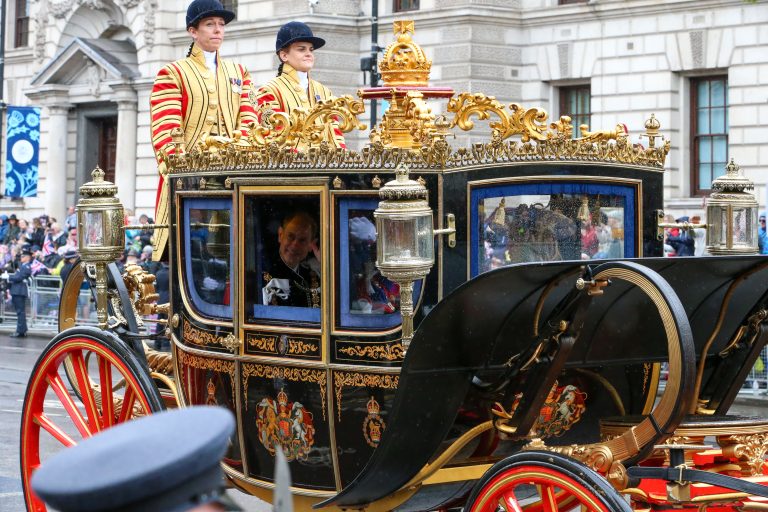
“Erin go bragh” – a phrase that resonates with a deep sense of Irish pride and has echoed through generations. But what are its true roots? What does “Erin go bragh in gaelic” actually mean? And how should we understand and use this powerful expression today, especially here in Ireland? Let’s delve into the heart of this iconic phrase, exploring its linguistic origins, its historical significance, and its contemporary relevance.
Unraveling the Language: “Erin go bragh in gaelic translation“
To truly understand “Erin go bragh,” we must look at its Gaelic origins. The phrase is an Anglicization of the Irish Gaelic expression “Éirinn go brách“. So, the answer to “What does Erin go Bragh mean in Gaelic?” is essentially found in understanding “Éirinn go brách“.
Breaking down the Gaelic:
- Éirinn: This is the dative case of Éire, the Irish word for Ireland. Think of it as “to Ireland” or “for Ireland” in this context.
- go: This is a preposition meaning “to” or “until.”
- brách: This word signifies “eternity,” “forever,” or “until the end of time.”
Therefore, the direct “Erin go bragh in gaelic meaning” and the “Erin Go Bragh meaning in English” is “Ireland forever” or “Until the end of time, Ireland!” It’s a powerful declaration of enduring loyalty and love for the homeland.
The Anglicized Form: “Erin Go Bragh”
While “Éirinn go brách” is the authentic Gaelic form, “Erin go bragh” became widely popularized through Irish emigration, particularly in the 19th century. As Irish people spread across the globe, this Anglicized version became a rallying cry, a way to maintain their identity and express their longing for home.
Navigating Usage: “Is it okay to say Erin go Bragh?“
For those outside of Ireland, using “Erin go bragh” can be a way to show solidarity and appreciation for Irish culture. However, context is key. It’s generally acceptable when used respectfully and with an understanding of its meaning and historical significance, often in celebratory contexts related to Irish pride or heritage.
However, it’s crucial to avoid using it in a stereotypical or trivializing manner. Understanding the historical weight the phrase carries, particularly in relation to periods of struggle and emigration, is paramount. Here in Ireland, you’ll hear “Éirinn go brách” more commonly, and using the Gaelic form is often seen as more authentic and respectful.
Cross-Cultural Connections: “Erin go bragh in gaelic scottish“
The question of “What is the Scottish equivalent of Erin go Bragh?” brings us to the shared Celtic heritage of Ireland and Scotland. While there isn’t a direct, word-for-word translation that carries the exact same historical and cultural weight, a phrase that conveys a similar sentiment of enduring national pride is “Alba gu bràth.” Here, Alba is the Gaelic word for Scotland, and gu bràth means “forever,” mirroring the structure and meaning of “Éirinn go brách.”
Responding to the Sentiment: “What is the proper response to Erin go Bragh?“
If someone says “Erin go bragh” to you, a respectful and appropriate response would be to acknowledge the sentiment with a nod, a smile, or perhaps a simple “Éirinn go brách” back if you’re comfortable with the Gaelic. Depending on the context, you could also express agreement with their pride in Irish heritage. There isn’t one single “proper” response, but acknowledging the sentiment positively is always a good approach.
The Essence of Irishness: “What is the most Irish thing to say?“
Defining the “most Irish thing to say” is subjective and often depends on humor and context. However, phrases that often come to mind include warm greetings like “Céad míle fáilte” (a hundred thousand welcomes), expressions of good luck like “Ádh mór,” or even witty and self-deprecating remarks that are a hallmark of Irish humor. “Éirinn go brách” certainly carries a strong sense of Irish identity and pride, making it a contender in expressing a core Irish sentiment.
Symbolism and Representation: “What is the symbol of Erin go Bragh?“
There isn’t one universally recognized “symbol of Erin go Bragh” in the same way a shamrock represents Ireland. However, the phrase is often associated with symbols of Irish patriotism and identity, such as the Irish tricolor flag, the harp, and sometimes even historical emblems related to Irish nationalism. You might see “Erin Go Bragh flag” designs incorporating these elements alongside the phrase.
Demystifying a Phrase: “What does Erin go Bragh girl mean?“
The phrase “Erin go Bragh girl” doesn’t have a specific, widely recognized meaning. It likely refers to a woman or girl who expresses strong Irish pride and embodies the sentiment of “Ireland forever.” It’s an informal way of highlighting someone’s Irish identity and patriotism.
Linguistic Nuances: “Do Irish say yes?“
Yes, absolutely! While Irish English has its own distinct vocabulary and phrasing, the standard word for affirmation is “yes.” In Gaelic, the common ways to say yes are “tá” (is) in response to a statement using the verb bí (to be), and by repeating the verb in an affirmative form in response to other questions.
The Name of the Land: “Is it Erin or Eireann?” and “Why is Ireland referred to as Erin?“
Éire is the Irish word for Ireland. Éireann is the dative case of Éire, used after certain prepositions (like go in “Éirinn go brách“) and in some other grammatical contexts. “Erin” is an Anglicized form of Éirinn. The poetic name “Erin” has been used in English for centuries to refer to Ireland, often evoking a romantic or nostalgic image of the country.
Farewells in Ireland: “What do the Irish say instead of goodbye?“
While “goodbye” is certainly understood and used in Ireland, you’ll often hear other farewells, such as “Slán” (pronounced slawn, meaning “safe journey”), “Slán go fóill” (goodbye for now), “Feicfidh mé thú” (I’ll see you), or the more informal “Cheers” or “Alright?” (used as a parting).
Mastering the Pronunciation: “How do you pronounce Éirinn go Brách?” and “Erin Go Bragh pronunciation“
Accurate pronunciation is key to showing respect for the language. Here’s a guide:
- Éirinn: Pronounced roughly as “Air-inn,” with a slight roll on the ‘r’ if you can manage it. The first syllable is stressed.
- go: Pronounced like the English word “go.”
- brách: Pronounced roughly as “brawkh,” with a guttural ‘ch’ sound similar to the ‘ch’ in the Scottish word “loch” or the German word “Bach.”
Therefore, “Éirinn go brách” sounds something like “Air-inn go brawkh.”
For “Erin go bragh,” the pronunciation is more straightforwardly Anglicized: “Er-in go braw” (again, with a softer, English ‘r’ and a less guttural ‘gh’ sound, often just a soft ‘h’ or even silent).
A Historical Note: “What did Saint Patrick remove from Ireland?“
The popular legend that Saint Patrick removed snakes from Ireland is more symbolic than literal. Geological evidence suggests that Ireland has never been home to snakes following the last glacial period. The “snakes” Patrick is said to have banished are often interpreted metaphorically as paganism or evil.
Conclusion: The Enduring Echo of “Éirinn go brách“
“Éirinn go brách” and its Anglicized form, “Erin go bragh,” are more than just words; they are a powerful expression of Irish identity, resilience, and enduring love for the homeland. Understanding its Gaelic roots, its historical context, and its contemporary usage allows for a deeper appreciation of this iconic phrase. Whether you hear it in the passionate cheers at a sporting event, see it emblazoned on a flag, or encounter it in a heartfelt farewell, the sentiment remains the same: Ireland forever. And here in Ireland, that sentiment continues to resonate deeply in the authentic tones of “Éirinn go brách.”




